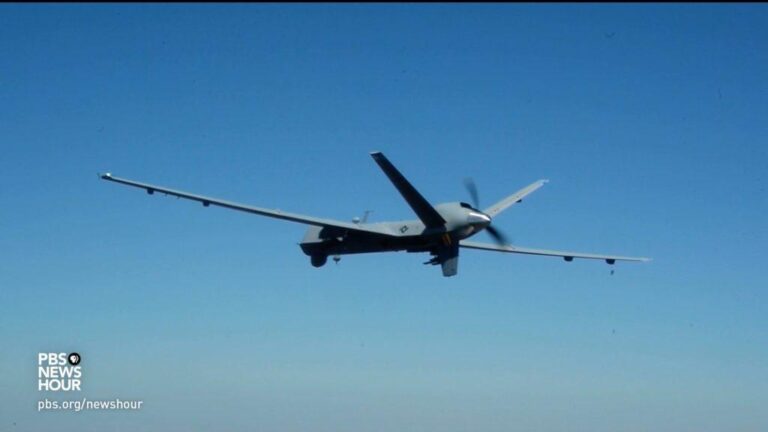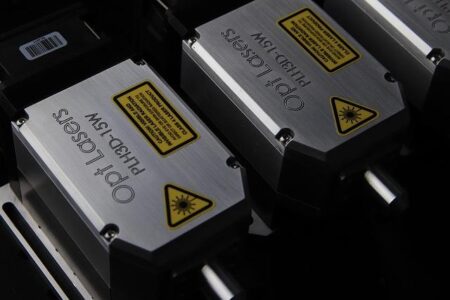In a striking development that underscores the evolving landscape of modern warfare, Russia has reportedly deployed a new fleet of solar-powered ambush drones, signaling a shift towards more sustainable and stealthy military technology. According to recent defense sources, these unmanned aerial vehicles (UAVs) are designed to operate quietly and persistently, harnessing solar energy to extend their patrol times and enhance battlefield surveillance. This innovative deployment, dubbed “Creeping Doom” by military analysts, raises fresh questions about the future of drone warfare and the strategic implications for global security.
Russia’s Solar Powered Ambush Drones Revolutionize Modern Warfare Tactics
In a groundbreaking move, Russian military forces have integrated solar-powered ambush drones into their combat strategy, marking a significant evolution in autonomous warfare technology. These drones, equipped with advanced solar cells, can remain operational for extended periods without the need for frequent battery swaps or recharging, ensuring persistent surveillance and strike capabilities in remote or contested areas. Their stealth design enables them to blend seamlessly into the environment, allowing them to execute surprise attacks and gather real-time intelligence with minimal risk to human personnel.
Key Features of Russia’s Solar Ambush Drones:
- Extended endurance through solar energy harvesting
- AI-driven threat identification and target engagement
- Low radar visibility with adaptive camouflage technology
- Modular payloads ranging from reconnaissance sensors to precision munitions
| Specification | Capability |
|---|---|
| Flight Duration | Up to 72 hours continuous operation |
| Max Range | 150 km autonomous patrol |
| Payload Capacity | 5 kg, mission-specific |
| Stealth Tech | Radar-Absorbent Material & Visual Camouflage |
Technical Innovations Behind Russia’s Stealth Drone Capabilities and Their Battlefield Impact
Russia’s latest stealth drone initiatives hinge on groundbreaking solar power integration, enabling extended flight times without relying on conventional fuel sources. These unmanned aerial vehicles (UAVs) are equipped with advanced photovoltaic cells embedded into their wing surfaces, allowing them to harness ambient sunlight efficiently even under overcast conditions. Coupled with ultra-lightweight composite materials that minimize radar cross-section, these drones achieve near-invisibility against both visual and electromagnetic detection systems. Their low acoustic footprint further complicates enemy tracking, effectively redefining the parameters of modern aerial reconnaissance and strike capabilities.
On the battlefield, the operational advantages are significant. These solar-powered drones can remain on station for days, providing persistent surveillance and real-time intelligence to ground units. Their stealthy approach enables ambush tactics that surprise adversaries, often striking with pinpoint precision before withdrawing unnoticed. Below is a comparison table highlighting key technical features of Russia’s stealth solar drones versus conventional models:
| Feature | Solar-Powered Stealth Drone | Conventional Drone |
|---|---|---|
| Flight Endurance | Up to 72 hours | 6-12 hours |
| Radar Visibility | Minimal | Moderate |
| Acoustic Signature | Near-silent | Audible engine noise |
| Power Source | Solar Cells + Battery | Gasoline/Electric |
| Operational Role | Long-endurance ambush & ISR | Short-term reconnaissance |
Strategic Recommendations for Countering Emerging Solar Powered Drone Threats
To effectively mitigate the risks posed by solar-powered ambush drones, a multifaceted approach is essential. Investing in advanced detection systems that leverage AI-enhanced radar and thermal imaging can help identify these stealthy devices even under challenging environmental conditions. Complementing these technologies with networked early warning systems will enable real-time sharing of threat data across military and civilian defense units, significantly reducing response times. Moreover, the incorporation of directed energy weapons, such as high-powered microwaves and lasers, offers promising non-kinetic solutions to neutralize drones without escalating conflicts or causing collateral damage.
Building resilient countermeasures also requires adapting existing defense protocols to these emerging threats. Developing dynamic electronic warfare tactics that disrupt solar-powered drones’ guidance and communication systems can degrade their effectiveness in hostile zones. Training rapid-response teams in urban and rural drones’ interdiction strategies ensures preparedness against ambush scenarios. The table below summarizes key strategic pillars for countering these drones, emphasizing synergy between technology, intelligence, and operational readiness.
| Strategic Pillar | Primary Focus | Expected Outcome |
|---|---|---|
| Detection & Surveillance | AI-driven sensors & network alerts | Early identification & continuous tracking |
| Directed Energy Deployment | Lasers & microwave systems | Rapid, precise drone neutralization |
| Electronic Warfare | Signal jamming & hacking | Disruption of enemy control channels |
| Operational Training | Ambush response & interdiction drills | Operational Training row. Here’s the full completion: |
| Operational Training | Ambush response & interdiction drills | Enhanced rapid response & mission success rates |
| Strategic Pillar | Primary Focus | Expected Outcome |
|---|---|---|
| Detection & Surveillance | AI-driven sensors & network alerts | Early identification & continuous tracking |
| Directed Energy Deployment | Lasers & microwave systems | Rapid, precise drone neutralization |
| Electronic Warfare | Signal jamming & hacking | Disruption of enemy control channels |
| Operational Training | Ambush response & interdiction drills | Enhanced rapid response & mission success rates |
Let me know if you want help refining or expanding on this content!
In Retrospect
As Russia advances its deployment of solar-powered ambush drones, the implications for modern warfare underscore a shifting battleground where technology and endurance converge. This development not only highlights Moscow’s commitment to leveraging innovative drone capabilities but also raises critical questions about the future of aerial surveillance and combat tactics. As global powers monitor these evolving threats, the integration of renewable energy in military hardware signals a new era of persistent, autonomous operations-one that could redefine strategic calculations around the world.




